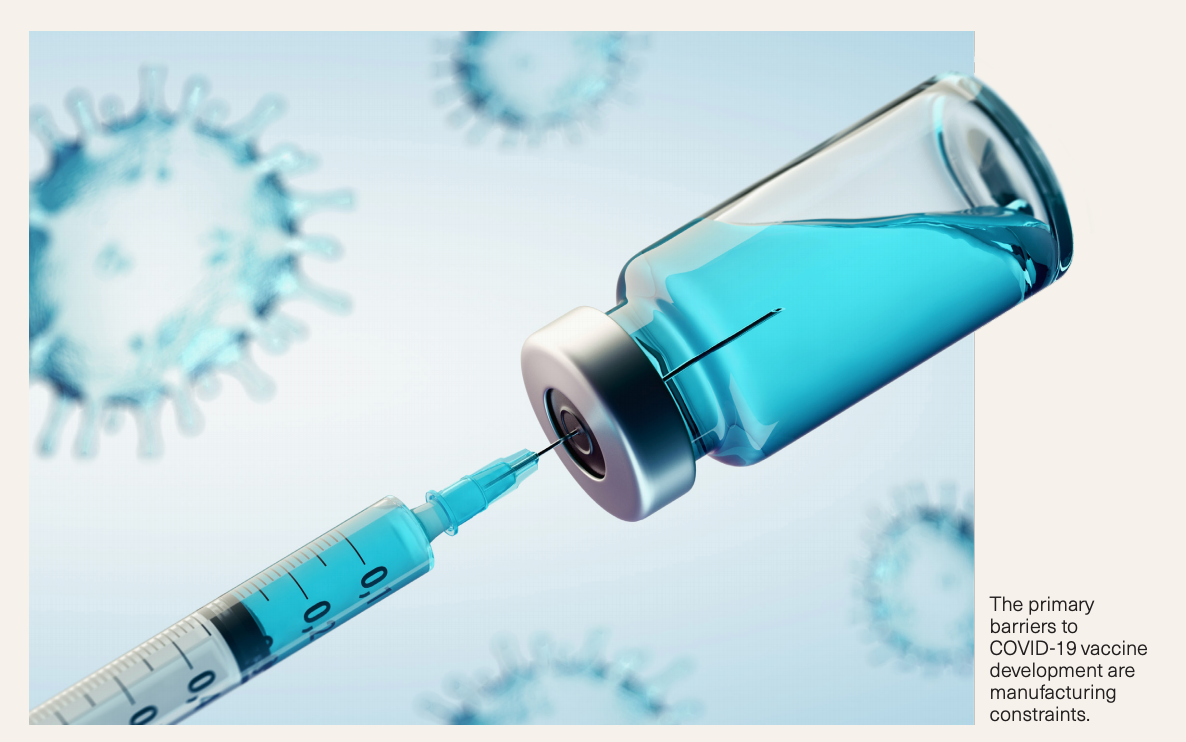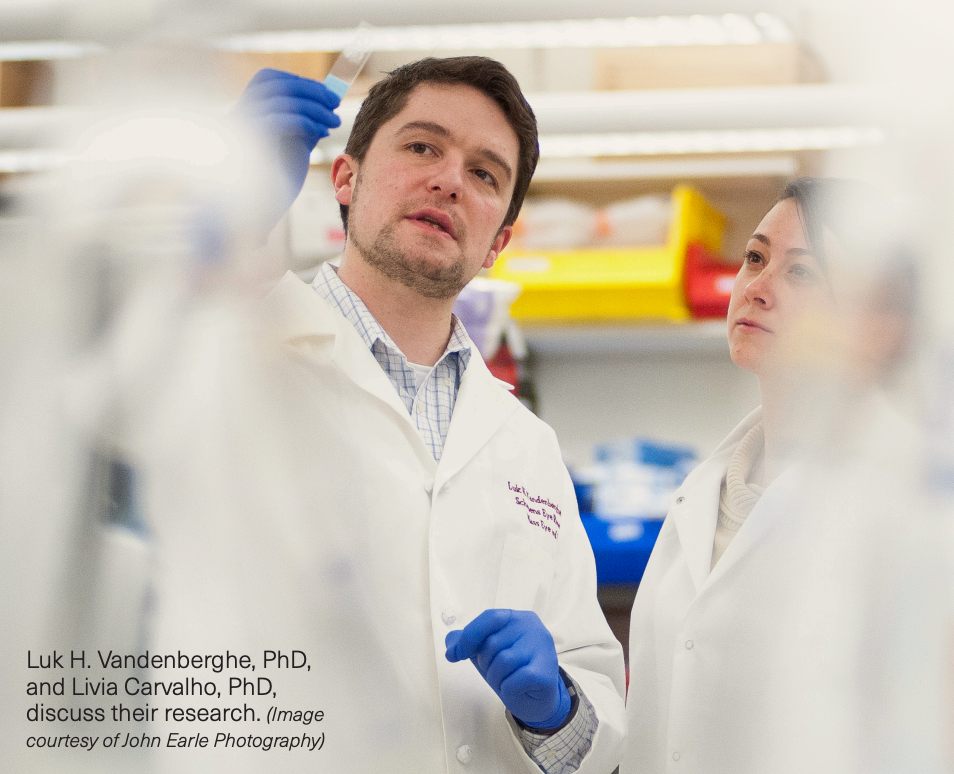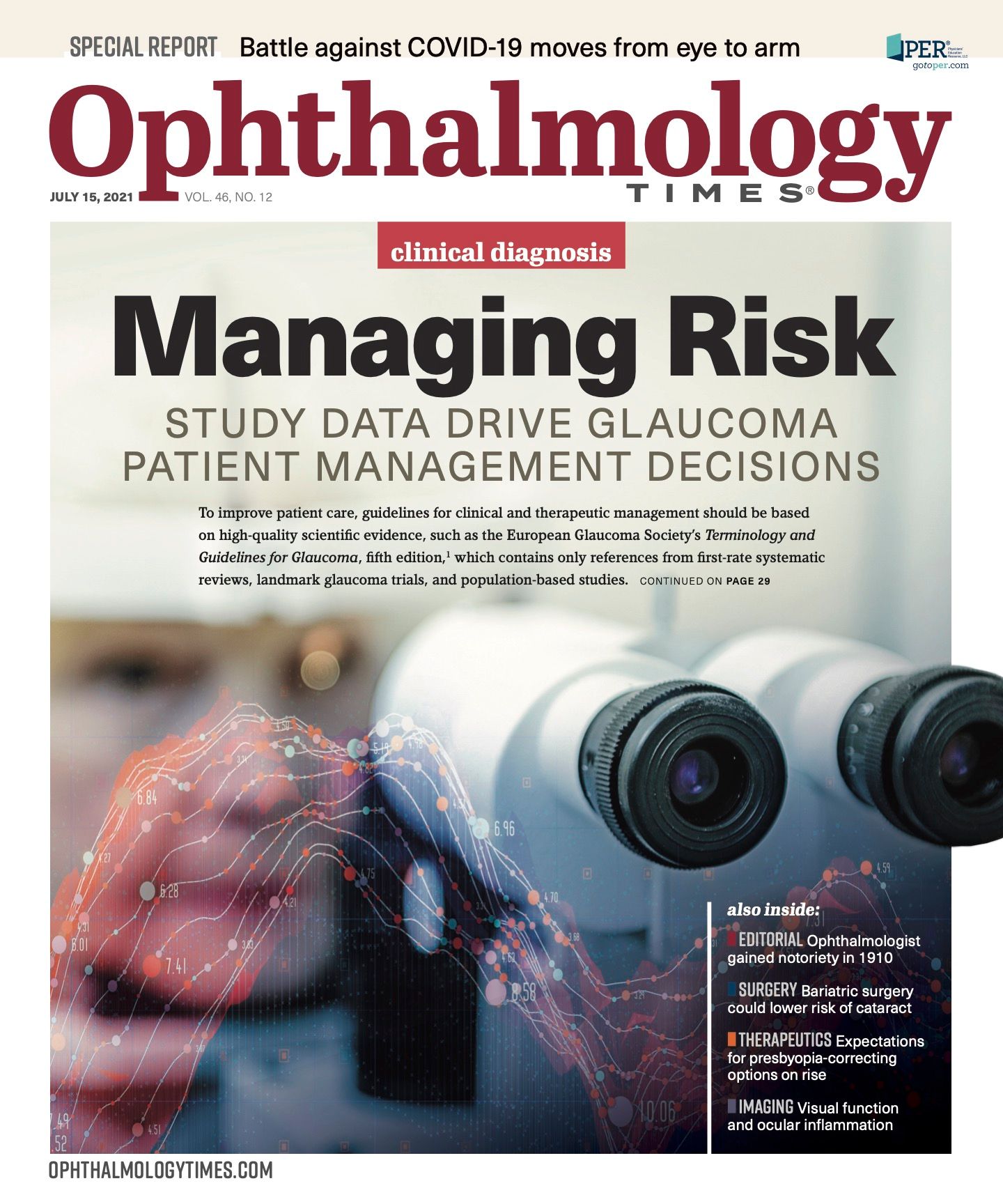Publication
Article
Digital Edition
AAVCOVID vaccine: A combination of factors harnessing COVID-19
Author(s):
The primary barriers to COVID-19 vaccine development are manufacturing constraints.

Reviewed by Luk H. Vandenberghe, PhD
AAVCOVID, an experimental adeno-associated viral vector vaccine (AAV) developed for the coronavirus that causes COVID-19, is being developed by a consortium led by a Mass Eye and Ear research group in Boston.
The gene-based vaccine is a novel application built on the safe and well-established AAV technology that was first put to use in ophthalmology in voretigene neparvovec (Luxturna; Spark Therapeutics) used to treat biallelic RPE65-mediated inherited retinal disease.
Related: Effect of mRNA vaccines against COVID-19 may have lasting impact
A relevant question at this time in the COVID-19 pandemic concerns the continuing need for vaccines for COVID-19, given the approval of multiple effective vaccines in the US and worldwide.
The answer seems to be a resounding yes, according to Luk Vandenberghe, PhD, the Grousbeck Family Chair in Gene Therapy and associate professor of ophthalmology at Harvard Medical School, Boston, considering the emergence of variants in regions with high numbers of cases, the evolving safety profiles of the currently available vaccines, and the public’s preferences for and avoidance of certain vaccines that limit acceptance of the vaccines needed to reach population immunity.
However, as he pointed out, the primary barriers to vaccine development are manufacturing constraints particularly from a global perspective and getting the vaccines to patients in low- and middle-income countries, especially considering multiple-dose regimens and cold-chain requirements.
Novel platform
The safe, commercially available AAV platform lends itself to use in vaccine technology, despite differing substantially from other vaccines in that it is not a therapeutic application but rather a prophylactic vaccine application.
Related: AAO study: More than 96% of US ophthalmologists are vaccinated against COVID-19
In the case of the vaccine under discussion, a unique vaccine-specific AAV technology that Vandenberghe helped develop, ie, AAVrh32.33, was used.
He explained that “after an intramuscular injection in mice, instead of gene therapy stable expression, we saw waning self-limiting expression that was characterized by local inflammation toward the antigen at the injection site."

Another factor was that there was no relevant preexisting immunity to AAVrh32.33.
“AAVrh32.33 is unique because most AVs have a significant level of preexisting immunity in human populations,” Vandenberghe explained.
When he and his colleagues combined these factors in a vaccine to target a variety of antigens, they showed in mice and monkeys that a single dose of rh32.33 elicited potent immunogenicity to an encoded antigen that was highly durable in the animal models.
Related: AMA policy: Equitable distribution of resources needed to fight COVID-19
Addressing the pandemic
Vandenberghe and his colleagues resurrected rh32.33 early in 2020 and developed 9 vaccine candidates, all of which included the Wuhan spike of the SARS-CoV-2 and as an antigen and the critical receptor-binding domain in a variety of combinations and contexts.1
The investigators ultimately focused on 2 candidates, AAVCOVID19-1 (AC1) and -3 (AC3), the first of which is analogous to the spike antigen in most of the gene-based vaccines. The second is the secreted S1 portion of the spike protein, Vandenberghe explained.
When testing in mice and nonhuman primates, the investigators demonstrated potent induction of humoral and cellular immunogenicity from 1 dose and durable neutralizing responses at peak for at least 8 months in nonhuman primates.
When 2 different doses of the 2 candidates were compared head to head in an 18-month durability study, over time AC1 showed clear superiority.
In another study, a viral challenge in nonhuman primates was conducted to determine if the immunogenicity seen in the previous studies translated to protection against exposure to SARS-CoV-2, which it did compared with nonimmunized controls.
Related: Study suggests the eye as a point of SARS-CoV-2 infection
Manufacturing
After the efficacy of the vaccine was demonstrated, manufacturing was the next challenge.
The investigators considered whether it could be manufactured based on the presence of existing manufacturing industrial processes.
They partnered with Novartis Gene Therapies and the company produced clinical grade material in high yields and with high consistency; the results led to the belief that the vaccine could be scaled to large commercial manufacturing, he explained.
Importantly, the vaccine could be stored and it remained stable at room temperature for 1 month.
“We believe that this vaccine has a unique combination of attributes that may make it more relevant to the feasibility of global immunization campaigns,” Vandenberghe said.
Related: Investigating the low vulnerability of posterior eye segment to SARS-CoV-2
The work continues with continued optimization of the platform with the goal of achieving dose reduction.
The emerging COVID-19 variants are also being considered regarding cross-reactivity of the AC1 vaccine and the fabrication of variant vaccines.
Vandenberghe noted that because of the high safety bar for novel preventive vaccine platforms, safety studies are ongoing, as are regulatory discussions to move the vaccine to the clinical level.
--
Luk H. Vandenberghe, PhD
E: luk_vandenberghe@meei.harvard.edu
This article was adapted from Vandenberghe’s presentation at the Association for Research in Vision and Ophthalmology 2021 virtual annual meeting. Vandenberghe is a consultant to Novartis Gene Therapies and Albamunity. He hold patents for AAVCOVID and various AAV and adeno gene therapy and vaccine technologies for which he receives royalties from the University of Pennsylvania and Mass General Brigham. This program is supported by Albamunity, Novartis, the Bill & Melinda Gates Foundation, FastGrant, and Harvard Medical School MassCPR.
---
Reference
1. Wrapp D, N. Wang N, Corbett KS, J. et al. Cryo-EM structure of the 2019-nCoV spike in the prefusion conformation. Science. 2020;367(6483):1260-1263. doi:10.1126/science.abb2507pmid:32075877

Newsletter
Don’t miss out—get Ophthalmology Times updates on the latest clinical advancements and expert interviews, straight to your inbox.




